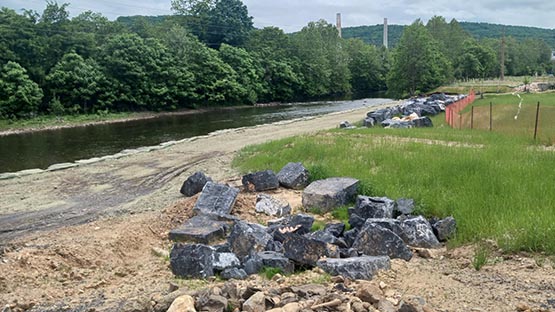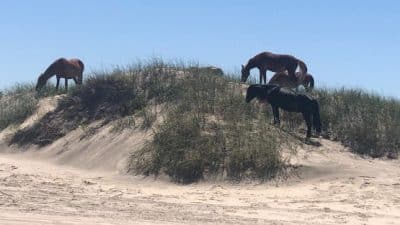The Top Story by Chris Graham
The Sept. 11, 2001, terrorist attacks on New York City and Washington, D.C., were a wakeup call for those involved in the emergency-services community in the Shenandoah Valley.
“The big thing that came out of 9/11 was the thought that, hey, we’ve got to look at our policies and procedures and training and equipment to be able to prevent these types of acts, and in the event that they do occur, then we need to be more prepared to respond to them,” said Gary Critzer, the director of emergency services in Waynesboro.
Waynesboro and the Valley would seem to be far removed from the line of sight of international terrorists, but Washington, D.C., is only 130 or so miles away – “and even in a place like Waynesboro, where the actual threats of international terrorism are relatively small, I do think that we need to be better prepared to respond not only to issues of international or domestic terrorism, but more importantly to the incidents that happen more frequently, like tropical storms and hurricanes that bring floodwaters and heavy rains and winds or serious winter storms or hazardous-materials incidents,” Critzer said.
“We need to be better prepared for natural and manmade disasters, period,” Critzer told The Augusta Free Press.
The increased attention given to the emergency-services sector in the wake of 9/11 has given first responders access to more in the way of state and federal funding to go toward updating equipment and communications capabilities – and it has pushed those responsible for coordinating response activities into better utilizing the resources that they have available to them.
“I think that’s a problem – that a lot of localities don’t know what resources they have at their disposal,” said Robbie Symons, who heads up Rockingham County’s fire and rescue department, which joined in a post-9/11 cooperative effort with the city of Harrisonburg, James Madison University, Eastern Mennonite University and Rockingham Memorial Hospital that is aimed at providing a regional focus for emergency response.
“Once we started sitting down at the table together, we realized that if there’s a large incident, whether it’s in the city or the county, we have a limited amount of resources, and it’s really important to us to know what the resources are before we approach the state or the federal government and ask for things,” Symons said.
“Our stand on it was, let’s be really prepared here, and let’s look at what resources we have for our communities, and let’s look together and train together and practice together, so if we do have something of significance happen, we have all these pieces of our puzzle put together,” Symons said.
“I think 9/11 forced us to do that – to understand the need to be better prepared and to look more at what we need to have available. Because obviously the community is going to rely on us for whatever they need. Everything starts at the local level,” Symons told the AFP.
Augusta County fire and rescue chief Bruce Crow said regional efforts involving the county and the cities of Staunton and Waynesboro ramped up in the aftermath of 9/11 have already seen some success.
“Back when the remnants of Hurricane Isabel came through in 2003, for example, and we had issues with localized flooding, we had sat down beforehand and said, Listen, it doesn’t make sense for us to open a shelter on our side of the line, and one of the cities to have one open on their side of the line,” Crow said.
“Let’s do one shelter, and we’ll let both county and city personnel do that. The county will do another one in this area, and we can do another joint shelter over here to serve residents of the county and the other city. As a result, we were only required to open three or four shelters – and those agencies, like the Red Cross and social services, that provide assistance to us didn’t have to commit as much of their resources to the operation as they would have if we had tried to do it separately,” Crow told the AFP.
The attention in Richmond since 9/11 has similarly been on fostering relationships with local and regional emergency responders to ensure that resources are used wisely.
“All preparedness and all response starts out as being local. That’s absolutely correct,” said Steve Mondul, a deputy assistant to Gov. Tim Kaine responsible for Commonwealth-preparedness activities.
“The people on the ground where the rubber meets the road are the ones who we must rely upon not only to take care of things in the first place, but actually form the foundation for everything that goes after it,” Mondul said. “The Commonwealth’s emphasis has been on making sure that the resources as they’re available are provided to the local authorities to best prepare themselves for terrorism and everything else.
“We try to deal in our response preparedness in an all-hazards manner so that everything is double- or triple-purposed. What serves against hazardous-materials accidents can also serve against a terrorist chemical attack – and so forth and so on. So we get a double or triple return out of our investment,” Mondul told the AFP.
Gov. Kaine has made emergency response at the local and state levels a top priority of his administration – in line with the attention given the issue by his predecessors, Jim Gilmore and Mark Warner.
“There’s a whole series of security areas where we’re much stronger today than we were five years ago – thank goodness. But we’re also aware of continuing gaps. You can never do everything you want to do – and we’re kind of painfully aware of those,” Kaine told the AFP.
“One of the things that we talk about is trying to have a culture of preparedness that’s kind of an all-hazards type deal. So if you prepare really well for a hurricane, and then there’s a terrorist event, then you can use those same evacuation plans and communications plans. And so we’ve really tried to look at all hazards and figure out how to respond,” Kaine said.
“I know that we’re much better off than five years ago – but it’s one of these areas where you’re never doing as much as you want to do. There’s always more that we want to do and need to do,” Kaine said.
(Originally published 09-11-06)










